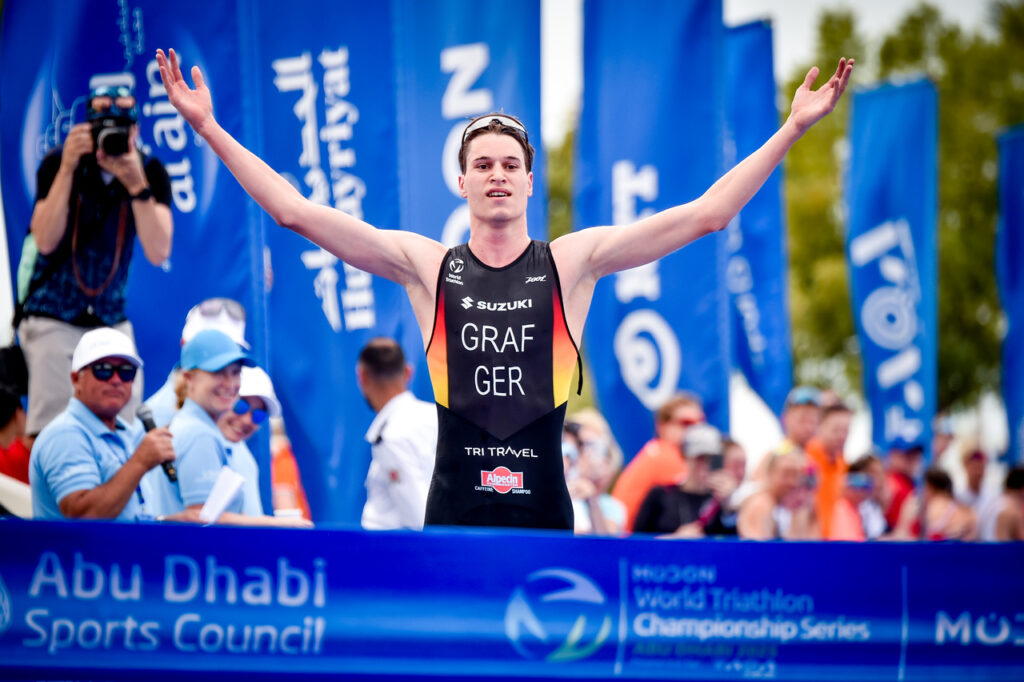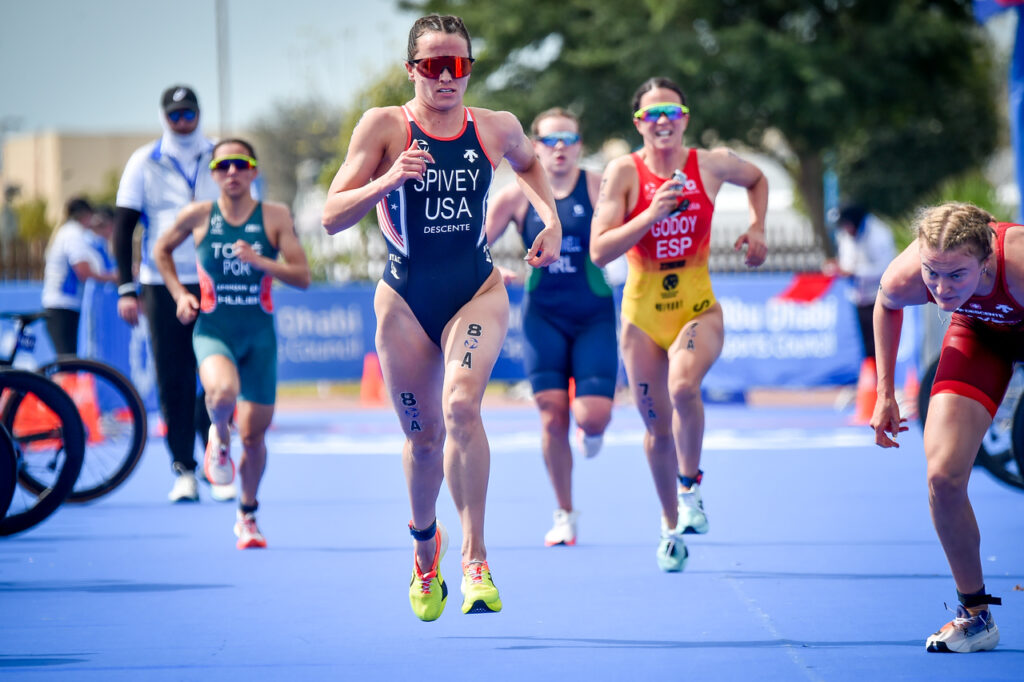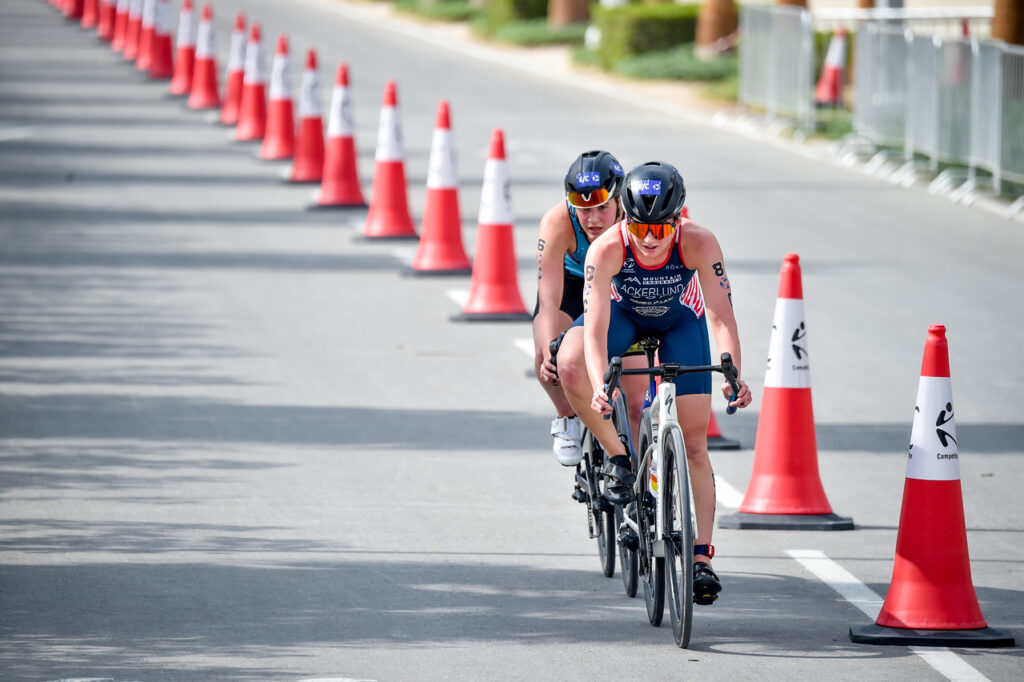Originally published at: Going Pro: Climbing the Professional Ladder in Draft-Legal Triathlon - Slowtwitch News

Photo: World Triathlon
Last week, we released the first part of a look into what it takes to become a professional triathlete. That article was focused on long-distance racing, and we concluded that it is a little too easy to earn a pro card in this sect of triathlon. Today, we will be looking at short-course, draft-legal triathlon, and how, while it falls under the same sport umbrella as longer racing, it presents a much different reality for professionals.
Earned Starts
The problem we pinpointed with long-distance professional standards is that there are no tiers or levels to racing. Once an athlete earns their pro card, they are free to race in any IRONMAN, 70.3 or Challenge event they please. This leads to multiple athletes getting crushed at the biggest races around the world, not just by the top triathletes on the circuit, but also by age groupers.
Long-distance triathlon is likely one of the only sports in which the weakest pro athletes can compete with the world’s best at pretty much any race they desire (excluding events that athletes need to qualify for, like world championships). As mentioned in our previous article, this is like a basketball player getting drafted to any professional league in the world and then going to play in an NBA game against Lebron James simply because he is a registered pro. That doesn’t happen in other sports, and it’s odd that it’s a common occurrence in triathlon.
This is not the norm for all of triathlon, however, as short-course athletes have a much tougher path to top races. The barrier to entry to earn a pro card might not be all that much different compared to long-course pro standards, but the system is set up in a way that prevents the slowest pros from racing at the most prestigious and elite events. The difference between short- and long-course racing, when it comes to who gets to race where, is that the short-course system does have tiers and levels. In long-course, athletes simply have to earn a pro card to race, but in short-course, they need to earn their spot on most start lists.

Photo: World Triathlon
Rising the Ranks
To get a better understanding of the World Triathlon short-course racing system, Slowtwitch spoke with Marc-Antoine Christin, the Olympic Pathway Lead at Triathlon Canada. Christin explains that, in Canada, becoming a pro triathlete is quite simple — there is no performance-based criteria for athletes to meet, and they instead just have to purchase a Triathlon Canada International Competition Card (ICC).
“For us, it starts really by applying for an ICC,” Christin says. “You’re paying for your pro license, in a way. There’s no qualification system to get through that, you just have to pay the fee.” This is the same system that the Deutsche Triathlon Union in Germany works, whereas governing bodies of the sport in the U.S., United Kingdom, Australia and elsewhere require athletes to hit a specific standard at races, whether that’s placing in the overall rankings or being a certain chunk of time back from the top pro on the day.
After a Canadian triathlete has paid for their ICC, they must undergo a medical examination to prove they are fit to race. For long-distance racing, once an athlete has checked these boxes, they are welcome to compete as a pro in any IRONMAN, 70.3 or Challenge event, but in short-course, there is a big hurdle stopping them from toeing the start line at the biggest races around the world.
“With an ICC, athletes can race at the Continental Cup level,” Christin says. He notes that Triathlon Canada’s lax, payment-only criteria for becoming a professional could lead to less-deserving athletes competing at elite draft-legal events, but he says the organization has not seen this develop into much of an issue. Plus, he adds that even if lesser athletes do head to a Continental Cup after buying their way to the start line, the road pretty much ends there.
“Athletes have to apply to Triathlon Canada to compete at the World Cup level,” Christin says, noting that, in most cases, athletes won’t be considered for a World Cup start unless they have hit a specific standard in Continental Cup racing. “For the World Cup, an athlete has to have made two top-five results at the Conti Cup level.” There is another option, Christin says, which applies to junior athletes. “If you have a junior who has been trending upward, we might let them race a World Cup.” However, he says this is rare, and only applied in exceptional cases.
After the World Cup circuit, the next step up is the World Triathlon Championship Series, for which athletes also apply. “To get to WTCS level for Triathlon Canada, you have to have two top 12s or one top-five finish at the World Cup level.”

Criteria can vary from country to country, with some governing bodies presenting tougher standards than Triathlon Canada and others offering more relaxed criteria, but the system is undoubtedly better organized for professionals than it is in the long-distance triathlon world. There are clear stepping stones that athletes must ascend, starting with Continental Cup racing, then to World Cup events and finally, if they earn their spot, to the WTCS.
There is also the matter of World Triathlon’s criteria for racing at these events. At both World Cup and WTCS races, each national federation is only allowed to enter five men and five women (host nations are granted an extra two men and two women per race). An athlete can apply to race at these levels, but they could be beaten out by five other individuals with better records at the lower-level races. With a strict limit on the number of athletes per race, there is no room for fluff or tossing undeserving triathletes into the mix simply because they have a professional license.
Too Easy?
The quick answer to whether it is too easy to go pro in short-course racing is no, it’s not. Yes, the barrier for entry to earning a pro card might not be that different from the path to a professional license in long-course racing, but the hurdles in triathlete’s way in the draft-legal world will keep them from competing in a race where they don’t belong.
There is nothing wrong with being slower than other athletes. For 99.9 percent of the racing world, there will always be people out there who are faster than you. However, it is fair to question if some people competing as pros should get to share the start line with the circuit’s best triathletes. The path to professional racing is much too easy in long-distance triathlon, and the sport could take some lessons from its short-course sibling to help minimize the number of less-deserving athletes at the world’s biggest races.